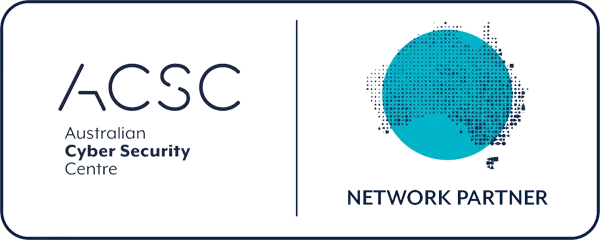Introduction: The Next Step in Cyber Resilience
In the previous article, we explored Identify, the crucial first step in understanding your cyber risk. Now that you know what assets you have, what’s at stake, and your compliance obligations, the next step is Protect—implementing resilient security measures to safeguard your business from cyber threats.
Cyberattacks don’t just target large corporations; 43% of cyberattacks focus on small and medium-sized enterprises (SMEs). Without proper protection, a single breach can cause financial losses, reputational damage, and even business closure. But the good news? By implementing the right safeguards, you can significantly reduce your risk.
What Does “Protect” Mean for Your Business?
The Protect phase focuses on reducing your attack surface—minimising opportunities for cybercriminals to infiltrate your systems. This isn’t just about installing antivirus software; it’s about creating a security-first culture with layered protections across people, processes, and technology.
Key Areas of Protection
- Strong Identity and Access Controls
One of the simplest yet most effective ways to protect your business is by controlling who has access to what and ensuring only authorised individuals can use sensitive systems.
- Multi-Factor Authentication (MFA): A strong password alone is not enough. Enforce MFA (preferably app-based rather than SMS) for all business accounts.
- Principle of Least Privilege (PoLP): Employees should only have access to the data and systems necessary for their role.
- Secure Password Policies: Require unique, complex passwords for each system and enforce regular updates. Consider a business-grade password manager to securely store and share credentials.
Case Study: The 2014 eBay Breach In one of the biggest breaches of all time, attackers compromised eBay employee credentials, gaining access to customer databases. A lack of MFA and privileged access controls allowed hackers to move laterally within the system, exposing 145 million accounts.
- Endpoint Protection and Device Security
Endpoints—laptops, desktops, and mobile devices—are often the weakest link in cybersecurity. Without proper security controls, a compromised device can provide attackers with direct access to your network.
- Use a Next-Generation Endpoint Protection (NGEP) or EDR Solution: Traditional antivirus isn’t enough. Consider solutions like SentinelOne or Microsoft Defender for Business.
- Patch Management: Ensure all devices receive regular updates to fix vulnerabilities.
- Secure Personal Devices (BYOD Policy): If employees use personal devices for work, require minimum security standards, including antivirus, MFA, and encryption.
- Network Security: Defending the Perimeter
With the rise of cloud computing and remote work, the traditional network perimeter is dissolving. But network security is still crucial:
- Firewalls and Intrusion Prevention Systems (IPS): Block unauthorised access and detect suspicious activity.
- Zero Trust Architecture: Never assume trust—verify every connection before granting access.
- Virtual Private Network (VPN): Secure remote access with encrypted VPN connections.
- Data Protection and Backup Strategy
Your data is one of your most valuable assets. Protecting it ensures business continuity even in the face of cyber incidents.
- Regular Backups: Follow the 3-2-1 rule: Keep three copies of data, on two different media, with one stored offsite.
- Data Encryption: Encrypt sensitive data in transit and at rest to prevent unauthorised access.
- Cloud Security Best Practices: Ensure Microsoft 365, SharePoint, and other cloud services are configured securely, with limited public sharing and strong access controls.
- Security Awareness Training: Your First Line of Defence
Technology alone can’t protect your business—your employees need to recognise and prevent cyber threats.
- Regular Phishing Simulations: Test employees with fake phishing emails and train them to spot scams.
- Security Best Practices Training: Teach staff how to create strong passwords, recognise social engineering, and securely handle sensitive data.
- Incident Response Drills: Employees should know what to do in case of a cyber incident, ensuring a quick and effective response.
How Managed Services Australia Can Help
At Managed Services Australia, we offer comprehensive proactive monitoring services tailored to meet the unique needs of your business. Our team of experts uses advanced tools and techniques to monitor your systems and networks 24/7. Here’s how we can help:
Real-Time Monitoring: Our real-time monitoring services ensure that any issues are detected and addressed immediately. This helps in preventing potential problems from escalating into major issues.
Regular Updates and Maintenance: We ensure that your systems and software are always up-to-date with the latest security patches and updates. This helps in preventing vulnerabilities that could be exploited by viruses and other malicious software.
Performance Optimisation: Our team continuously monitors the performance of your systems and networks, identifying any factors that could be causing slowness. We then implement solutions to optimise performance, ensuring your systems run smoothly.
Comprehensive Reporting: We provide detailed reports on the health and performance of your systems and networks. This helps you stay informed about the status of your IT infrastructure and make informed decisions.

Case Study: The Target Data Breach In 2013, Target suffered a massive data breach affecting 40 million payment card details. The attack originated through a third-party HVAC vendor who had weak cybersecurity practices. If Target had enforced strong third-party risk management policies, the attack might have been prevented.
How MSA Helps You Protect Your Business
At Managed Services Australia, we take the guesswork out of cybersecurity. Through our vCISO and managed security services, we help businesses:
- Implement Essential Eight security controls for baseline protection.
- Deploy advanced endpoint and network security solutions.
- Enforce identity protection policies, including MFA and least privilege access.
- Conduct security awareness training to strengthen human defences.
- Ensure regular patching, backup strategies, and cloud security best practices.
Protecting Your Business is Protecting Its Future
Cybersecurity isn’t just an IT issue—it’s a business imperative. A well-executed Protect strategy can mean the difference between a minor security incident and a full-scale data breach.
In the next article, we’ll cover Detect—how to spot cyber threats before they cause damage.
Visit our website at Managed Services Australia to learn more about our services and discover how we can help your business stay one step ahead of IT.
Dial 1300 024 748, shoot us an email at [email protected], or schedule a session with one of our IT specialists. But for now, take action:
- Review your MFA and access controls.
- Ensure your endpoints are secured and up to date.
- Schedule a security awareness training session for your staff.
Cybersecurity is an ongoing journey, but every step you take strengthens your business against evolving threats.






